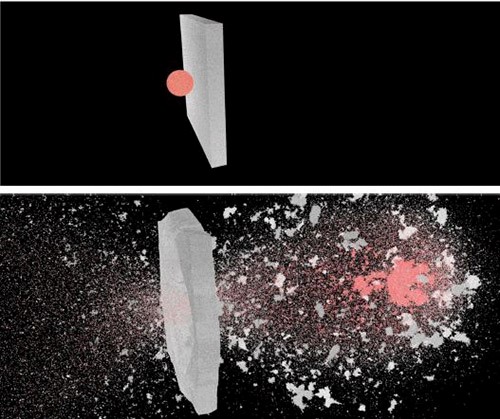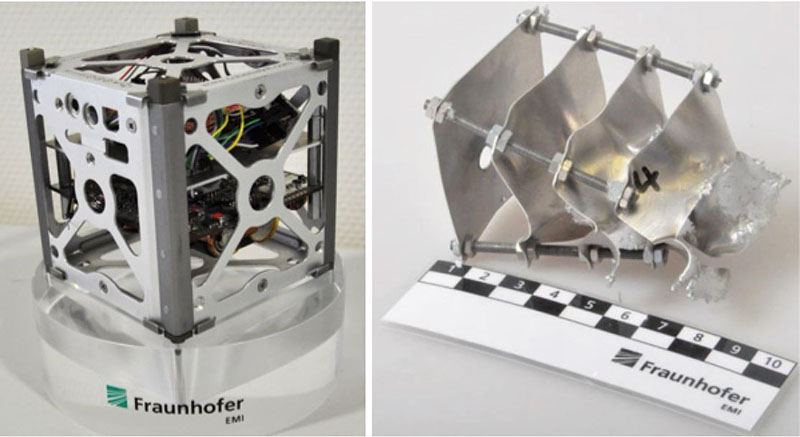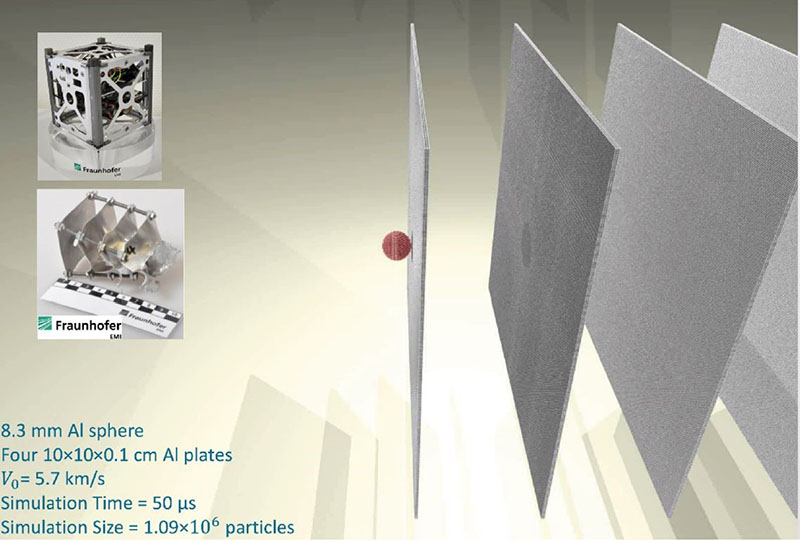The dangers of space debris



Near-Earth space debris is a constantly growing hazard. Collisions between objects and active satellites can cause their failure or serious damage.
In order to evaluate the risk of future collisions, it is important to analyze and understand them in detail. To this end, many simulation data based on physical models are generated within the project DEM‑O. These allow very precise characterization of the debris cloud forming in the event of such collisions.
A deeper understanding of the material processes concerning fracture behavior and the following fragmentation of spacecraft components caused by the collision with space-debris particles can significantly contribute to improvement strategies regarding satellite protection. So far, there exist only few empirical-numerical models with very limited predictive power with regard to said processes.
Improvement strategies for satellite protection
The purpose of our research is to develop new numerical procedures for the simulation of impact events, material failure and fragmentation, which then can be implemented in a computer program. The pivotal goal is to perform numerical model calculations that are representative for collision events between solid objects and space-debris particles. For this purpose, generic models of solid objects are developed and implemented in order to model their fragmentation at high-speed impact events. These generic models of solids form the basis for a new software tool called “MDCUBE.IMPACT“ that is currently under development; this tool will enable numerical simulations of material failure, fragmentation and debris formation at impact events within certain error limits.
The goal here is to correctly reproduce the physics of impact and shock-wave processes (conservation of energy and impulse) so that also collisions of participating objects at very high relative velocities (in the hypervelocity range) can be computed in a numerically stable manner.
Our research will include the optimization and parallelization of the developed software, which can be used to perform simulations of systems beyond 100 million particles. The simulation results of these very large systems exhibit a distinctive size distribution of fragment particles after impact.
Furthermore, new kinds of analysis of impact scenarios in the hypervelocity range are possible: for example, realistic simulations with a CubeSat model and the modeling of impact scenarios involving several satellites.